- Planting Large Trees: Benefits and Characteristics for a Country Plot
- Introduction
- Benefits of Planting Large Trees
- Characteristics of Large Trees
- Conclusion
- Enhancing Aesthetic Appeal
- Providing Shade and Cooling Effect
- Creating Privacy and Reducing Noise
- 1. Visual Barrier
- 2. Sound Absorption
- 3. Windbreak
- 4. Natural Screening
- 5. Wildlife Habitat
- Promoting Biodiversity and Habitat
- Increased Habitat Diversity
- Food and Shelter
- Plant Diversity
- Conservation of Wildlife
- Community Engagement
- Conclusion
- Improving Air and Water Quality
- Air Quality Improvement
- Water Quality Enhancement
- Preventing Erosion and Soil Degradation
- 1. Strong Root Systems
- 2. Interception of Rainfall
- 3. Reduced Runoff
- 4. Enhanced Soil Structure
- 5. Windbreak Effect
- Saving Energy and Reducing Carbon Footprint
- 1. Shade and Insulation
- 2. Windbreakers
- 3. Oxygen Production
- 4. Carbon Sequestration
- 5. Erosion Control
- 6. Natural Habitat for Wildlife
- Increasing Property Value
- Questions and Answers:
- What are the benefits of planting large trees on a country plot?
- What types of large trees are suitable for planting on a country plot?
- How do large trees help to improve air quality?
- Can large trees be planted close to a house on a country plot?
- Do large trees require special maintenance?
- Are there any disadvantages of planting large trees on a country plot?
- Videos: Benefits of Planting a Tree | Green Living
Planting large trees on a country plot offers a range of advantages and features that can greatly enhance the aesthetic appeal, environmental sustainability, and overall functionality of the space. Not only do large trees provide shade and privacy, but they also contribute to the ecological balance, help mitigate climate change, and attract wildlife.
One of the main advantages of planting large trees on a country plot is the shade they provide. As the trees grow and mature, their branches and leaves create a natural canopy that blocks the sun’s harsh rays, offering a cool and comfortable outdoor space. This shade is particularly valuable during the hot summer months when temperatures rise and homeowners seek relief from the heat.
In addition to shade, large trees also offer privacy to homeowners who value their solitude and tranquility. By strategically planting trees along property boundaries or in specific areas, individuals can create natural screens that shield their homes and outdoor spaces from prying eyes. This not only enhances privacy but also adds a sense of seclusion and intimacy to the property.
Moreover, planting large trees on a country plot is an effective way to contribute to the ecological balance and mitigate climate change.
As trees absorb carbon dioxide and release oxygen, they act as natural carbon sinks and help reduce the amount of greenhouse gases in the atmosphere. By planting and nurturing large trees, homeowners can actively participate in the fight against climate change and make a positive impact on the environment.
Furthermore, the presence of large trees on a country plot attracts a diverse range of wildlife. Birds, squirrels, and other small animals are drawn to the trees for their food, shelter, and nesting opportunities. This creates a vibrant ecosystem that adds to the natural beauty and biodiversity of the property.
Planting Large Trees: Benefits and Characteristics for a Country Plot
Introduction
Planting large trees on a country plot offers numerous benefits and adds beauty and charm to the landscape. Along with their aesthetic appeal, large trees provide shade, privacy, and various environmental advantages. This article explores the benefits and characteristics of planting large trees on a country plot.
Benefits of Planting Large Trees
- Shade: One of the significant advantages of planting large trees is the shade they provide. Trees create cool areas, offering relief from the scorching sun during hot summer days. With their wide canopies, large trees create comfortable, shaded areas that are perfect for relaxation and outdoor activities.
- Privacy: Large trees act as natural privacy screens, shielding your country plot from prying eyes. They create a natural barrier that ensures your property stays secluded and protected. This is particularly beneficial for those who value their privacy and want to enjoy their outdoor space without any disturbances.
- Environmental Benefits: Planting large trees on a country plot contributes to a healthier environment. Trees absorb carbon dioxide and release oxygen, helping to improve air quality. They also act as windbreaks, reducing the impact of strong winds on your property. Additionally, trees provide a habitat for wildlife, attracting birds and insects, which adds to the biodiversity of your country plot.
- Erosion Control: Large trees have extensive root systems that help stabilize the soil, preventing erosion. Their root network holds the soil in place, reducing the risk of landslides and soil erosion, which can be particularly beneficial if your country plot is located on a slope or prone to erosion.
- Increased Property Value: The presence of mature, large trees can significantly increase the value of your country plot. Trees add visual appeal and make your property more attractive to potential buyers. The shade, privacy, and environmental benefits they offer can also make your country plot more desirable to prospective homeowners.
Characteristics of Large Trees
Planting large trees on a country plot requires careful consideration of their characteristics to ensure the best fit for your property. Some key characteristics to consider include:
- Growth Rate: Large trees can take many years to reach their full size, so it is essential to be patient and understand their growth rate before planting. Some trees grow faster than others, so choose species that align with your desired timeline.
- Height and Spread: Consider the height and spread of large trees to ensure they fit well within your country plot. Account for potential obstructions such as power lines or structures that could limit the growth space available.
- Soil and Sunlight Requirements: Different tree species have varying soil and sunlight requirements. Consider the soil type and conditions on your country plot and choose trees that will thrive in those conditions.
- Maintenance: Large trees often require regular maintenance to keep them healthy and safe. This may include pruning, fertilizing, and monitoring for any signs of disease or pests. Factor in the maintenance needs of large trees when planning for your country plot.
Conclusion
Planting large trees on a country plot offers numerous benefits ranging from shade and privacy to environmental advantages. When choosing large trees for your property, consider their growth rate, height and spread, soil and sunlight requirements, as well as the maintenance they require. With careful planning and selection, you can enjoy the many advantages and beauty that large trees bring to your country plot.
Enhancing Aesthetic Appeal
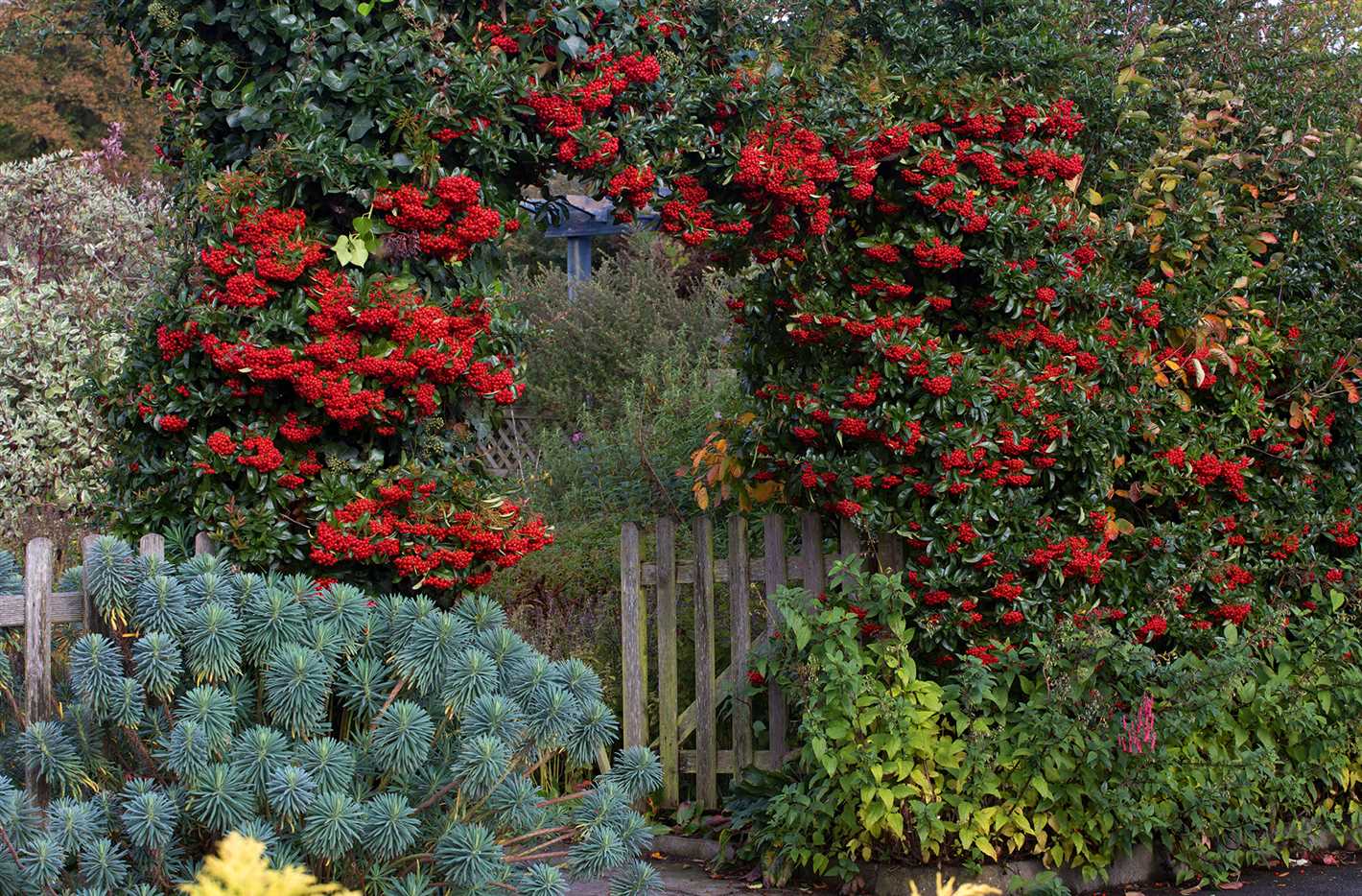
Planting large trees on a country plot can significantly enhance its aesthetic appeal. The presence of tall and mature trees adds a sense of beauty and elegance to the surrounding landscape. Here are some key points on how planting large trees can enhance aesthetic appeal:
- Visual Focal Points: Large trees act as visual focal points in the landscape, drawing the eye and creating a sense of direction and balance. They can serve as natural landmarks and add depth and dimension to the overall design.
- Seasonal Interest: Mature trees provide seasonal interest by changing their colors throughout the year. In the spring, they may blossom with beautiful flowers, while in the fall, they can display vibrant foliage. These seasonal changes can create a stunning and dynamic visual display.
- Shade and Shelter: The canopy of large trees provides shade and shelter, creating a cool and comfortable environment. This can be particularly appealing in hot summer months, as it allows for outdoor activities without being exposed to direct sunlight.
- Privacy and Screening: Planting large trees strategically can help create privacy and screen unwanted views. By placing them along property boundaries or near windows, they can act as natural barriers, blocking the view from outside and protecting the privacy of the property.
- Wildlife Habitat: Mature trees attract various species of birds and other wildlife, adding movement, color, and sound to the landscape. The presence of wildlife can bring a sense of liveliness and create a natural balance in the environment.
Overall, planting large trees on a country plot not only enhances the aesthetic appeal but also adds value to the property. It creates a visually pleasing and harmonious environment that can be enjoyed by the residents and visitors alike.
Providing Shade and Cooling Effect
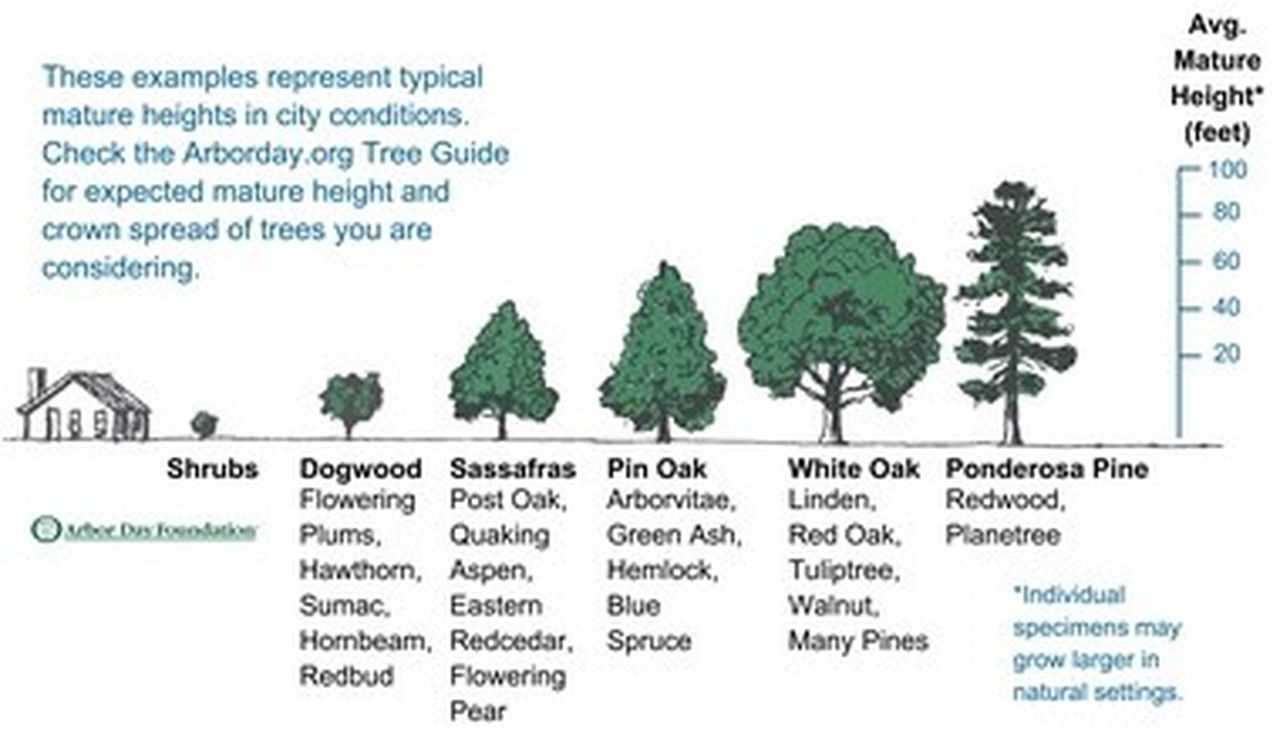
One of the main advantages of planting large trees on a country plot is the shade they provide. The thick foliage of these trees creates a cool and comfortable space, especially on hot summer days.
The shade from these trees can significantly reduce the temperature in the surrounding area. This can be especially beneficial for outdoor activities such as picnics, barbecues, or simply enjoying a book in the garden. The shade also protects people and animals from the harmful effects of excessive sun exposure, such as sunburn and heatstroke.
Large trees have a cooling effect on the environment. Through a process called evapotranspiration, trees release moisture into the air, which helps to lower the surrounding temperatures. This helps to create a more pleasant climate and can also reduce the need for air conditioning in nearby buildings.
In addition to providing shade and cooling, large trees can also reduce the intensity of urban heat islands. These islands are created by the abundance of concrete and asphalt in urban areas, which absorb and retain heat. By planting large trees in these areas, the trees can help to reduce the overall temperature and improve air quality.
Furthermore, the shade and cooling effect provided by large trees can also result in energy savings. By reducing the need for air conditioning, homeowners can save on energy bills and reduce their carbon footprint. This makes planting large trees a sustainable and environmentally-friendly choice.
Overall, the shade and cooling effect provided by large trees on a country plot can greatly enhance the comfort and enjoyment of outdoor spaces. Additionally, these trees have the potential to make a positive impact on the environment, reducing temperatures, saving energy, and enhancing air quality. Planting large trees is a decision that benefits both individuals and the community as a whole.
Creating Privacy and Reducing Noise
Planting large trees on a country plot can provide numerous benefits, one of which is creating privacy and reducing noise. Here are some advantages and features of how large trees can help in achieving these goals:
1. Visual Barrier
Large trees, with their dense foliage and tall heights, can act as an effective visual barrier. They can block the view from neighboring properties and roads, making your country plot feel secluded and private. This is particularly beneficial if you value your privacy and want to enjoy your outdoor space without any prying eyes.
2. Sound Absorption

The leafy canopies of large trees have the ability to absorb and dissipate sound waves, reducing noise pollution. By strategically planting trees around the perimeter of your country plot, you can create a buffer zone that reduces the impact of noise from nearby roads or other sources of disturbance. This can make your outdoor space feel more peaceful and serene.
3. Windbreak
Planting large trees can also serve as a windbreak, helping to minimize the effects of strong winds on your country plot. The dense foliage of the trees can act as a barrier, deflecting and slowing down the wind. This not only helps to create a more comfortable outdoor environment, but it can also protect your property from potential damage caused by strong gusts.
4. Natural Screening
In addition to creating privacy, large trees can also provide natural screening for unpleasant views or structures on your country plot. For example, if you have unsightly utility boxes or neighboring buildings that you want to hide, strategically planting trees can help to block them from sight, enhancing the overall aesthetic appeal of your property.
5. Wildlife Habitat
Planting large trees can attract various forms of wildlife to your country plot. These trees can serve as habitats for birds, squirrels, and other animals, adding to the natural ecosystem of your property. This can create a more tranquil and nature-filled environment, enhancing the overall experience of living in a country setting.
By leveraging the advantages and features mentioned above, planting large trees on your country plot can effectively create privacy and reduce noise, transforming your outdoor space into a peaceful oasis.
Promoting Biodiversity and Habitat
Planting large trees on a country plot can have a significant impact on promoting biodiversity and creating a thriving habitat for various organisms. Large trees offer numerous advantages that support the growth and development of diverse plant and animal life.
Increased Habitat Diversity
By planting large trees on a country plot, you introduce a variety of habitats within the ecosystem. The different layers of the tree, including the canopy, trunk, and root system, provide suitable environments for a wide range of organisms. Birds, insects, and small mammals can find nesting sites, shelter, and food sources among the branches and leaves of the tree.
Food and Shelter
The presence of large trees attracts a multitude of insects, which in turn attract birds and other insect-eating animals. The abundance of insects offers a reliable source of food for these organisms, contributing to the overall biodiversity of the area. The tree also provides shelter from predators and weather conditions, ensuring the survival of various species.
Plant Diversity
Large trees create microclimates within their immediate vicinity, allowing for the growth of a diverse range of plant species. The shade provided by the tree’s canopy can support the development of shade-tolerant undergrowth, while the leaf litter and fallen branches create nutrient-rich soil that favors the growth of new plants. This plant diversity further enhances the habitat and serves as a food source for herbivores.
Conservation of Wildlife
Planting large trees on a country plot contributes to the conservation of wildlife by providing essential resources and preserving natural habitats. The trees support a complex network of interactions between different organisms, helping to maintain the balance of the ecosystem. Additionally, large trees act as carbon sinks, offsetting carbon dioxide emissions and mitigating climate change, which has a direct impact on wildlife and their habitats.
Community Engagement
The presence of large trees in a country plot can foster community engagement and education about the importance of biodiversity and habitat conservation. It can serve as a valuable educational resource for schools, environmental organizations, and local communities, encouraging a sense of responsibility and stewardship towards the natural world.
Conclusion
Planting large trees on a country plot is a proactive step towards promoting biodiversity and creating a thriving habitat. It supports the growth of diverse plant and animal life, enhances habitat diversity, and contributes to the conservation of wildlife. By engaging the community and providing educational opportunities, the planting of large trees can have long-lasting positive effects on the environment.
Improving Air and Water Quality
Planting large trees on a country plot can have a significant positive impact on air and water quality. Here are some advantages and features of how planting trees can help improve these important environmental factors:
Air Quality Improvement
- Carbon Sequestration: Large trees have a greater capacity to capture and store carbon dioxide, one of the main greenhouse gases contributing to climate change. By absorbing carbon dioxide during photosynthesis and releasing oxygen, trees help reduce air pollution and improve the overall air quality.
- Filtering Pollutants: The leaves of large trees act as filters, trapping dust, pollen, and other airborne particles. This helps to clean the air and reduce respiratory problems and allergies among people living in the area.
- Reducing Air Temperature: Through a process called transpiration, trees release moisture into the air, which helps lower the temperature in the surrounding area. This cooling effect can be especially beneficial in hot climates and in urban areas where the heat island effect is prominent.
Water Quality Enhancement
- Preventing Soil Erosion: The root systems of large trees help hold the soil together, preventing erosion and reducing the amount of sediment that enters nearby water bodies. This helps maintain the water quality and prevent sedimentation that can harm aquatic ecosystems.
- Filtering Runoff: When it rains, trees act as natural filters by absorbing and transforming runoff water. The roots of trees capture pollutants and excess nutrients, such as nitrogen and phosphorus, reducing the amount of these substances that reach streams, lakes, and groundwater.
- Regulating Water Flow: Tree canopies intercept rainfall, increasing infiltration and reducing the speed at which water flows on the surface. This helps control and regulate water flow, reducing the risk of flooding and improving water quality by allowing for natural filtration processes.
Overall, planting large trees on a country plot can have numerous benefits for air and water quality. By improving air quality, trees help create a healthier and more pleasant environment to live in. At the same time, by enhancing water quality, trees contribute to the preservation and sustainability of local ecosystems.
Preventing Erosion and Soil Degradation
Planting large trees on a country plot can provide numerous benefits, including preventing erosion and soil degradation. Here are some advantages of planting large trees to prevent erosion:
1. Strong Root Systems
Large trees have extensive root systems that help stabilize the soil. These roots penetrate deep into the ground, creating a network that holds the soil in place. Their strong root systems also make the soil more resistant to erosion caused by wind or water runoff.
2. Interception of Rainfall
One of the leading causes of soil erosion is the impact of raindrops on bare soil, which can dislodge soil particles and carry them away. Large trees can intercept rainfall, reducing its impact on the ground. The canopy of the trees acts as a natural shield, breaking up the force of the raindrops and preventing them from directly hitting the soil surface.
3. Reduced Runoff
When heavy rain occurs, the water tends to run off the land instead of penetrating into the ground. This runoff can lead to soil erosion and degradation. The presence of large trees helps slow down the movement of water, allowing it to infiltrate the soil more effectively. The roots of the trees also act as channels, allowing the water to penetrate deeper into the ground rather than running off the surface.
4. Enhanced Soil Structure
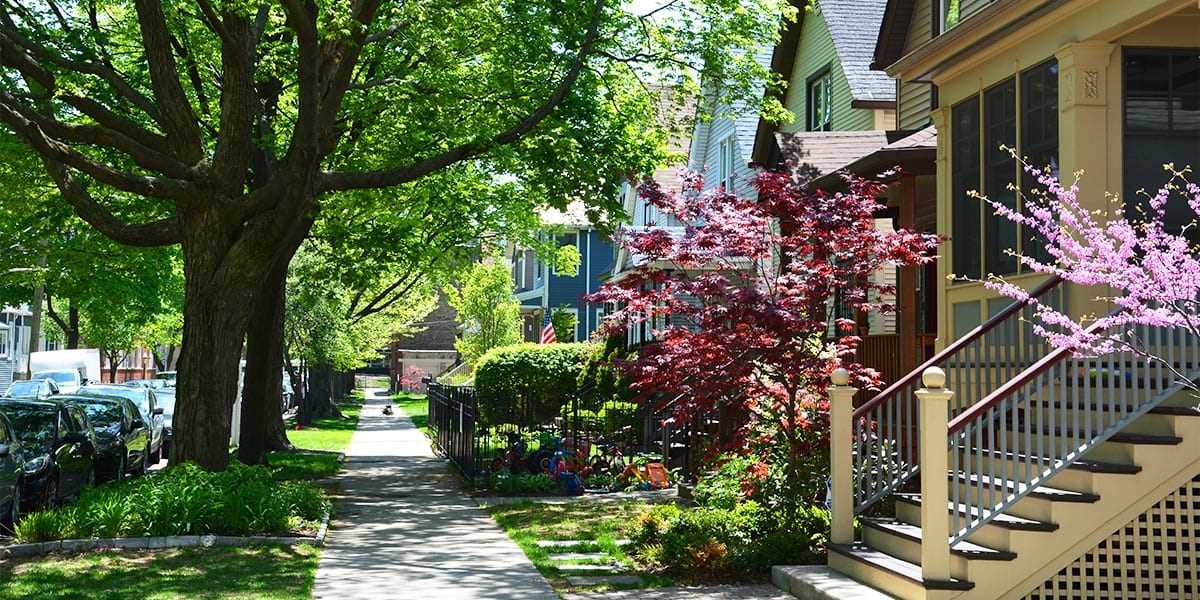
The presence of large trees can improve the overall structure of the soil. The roots of trees create channels that allow air and water to penetrate the soil, promoting better drainage and aeration. This improved soil structure is more resistant to erosion, as the particles are more tightly bound together.
5. Windbreak Effect
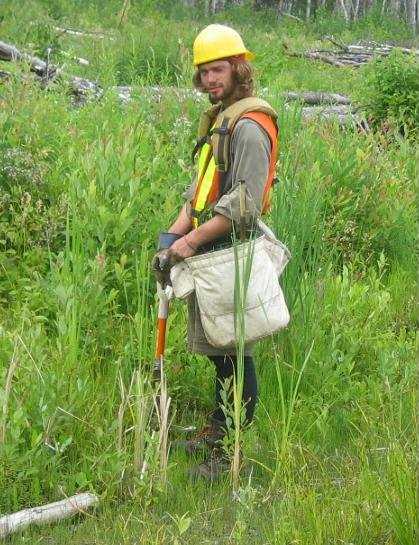
Large trees can also act as windbreaks, reducing the impact of strong winds on the soil. Wind erosion occurs when the force of the wind blows away the loose topsoil, leading to soil degradation. By planting large trees strategically, they can act as a barrier, slowing down the wind and protecting the soil from erosion.
In conclusion, planting large trees on a country plot can play a crucial role in preventing erosion and soil degradation. Their strong root systems, interception of rainfall, reduced runoff, enhanced soil structure, and windbreak effect all contribute to maintaining healthy and fertile soil for sustainable land use.
Saving Energy and Reducing Carbon Footprint
Planting large trees on a country plot can have significant benefits in terms of conserving energy and reducing carbon footprint. Here are some advantages:
1. Shade and Insulation
Large trees provide natural shade and insulation, helping to cool down the surrounding area and reduce the need for artificial cooling systems, such as air conditioning. This can result in significant energy savings, particularly during hot summer months.
2. Windbreakers
Tall trees also act as effective windbreakers, reducing the impact of strong winds on buildings and outdoor spaces. This can minimize heat loss from buildings and decrease the energy required for heating during colder seasons.
3. Oxygen Production
Trees are known for their ability to absorb carbon dioxide and produce oxygen through photosynthesis. By planting large trees, you can contribute to increasing the oxygen levels in the environment, helping to reduce carbon emissions and combat climate change.
4. Carbon Sequestration
Large trees have a higher capacity for carbon sequestration compared to smaller plants. They absorb more carbon dioxide from the atmosphere and store it in their roots, trunks, and branches. This process helps to reduce the concentration of greenhouse gases, making a positive impact on the environment.
5. Erosion Control
The extensive root systems of large trees help to stabilize the soil and prevent erosion. This is particularly beneficial in hilly or sloped areas, where soil erosion can lead to land degradation. By minimizing erosion, large trees contribute to preserving the fertility of the land and reducing the need for energy-intensive soil conservation efforts.
6. Natural Habitat for Wildlife
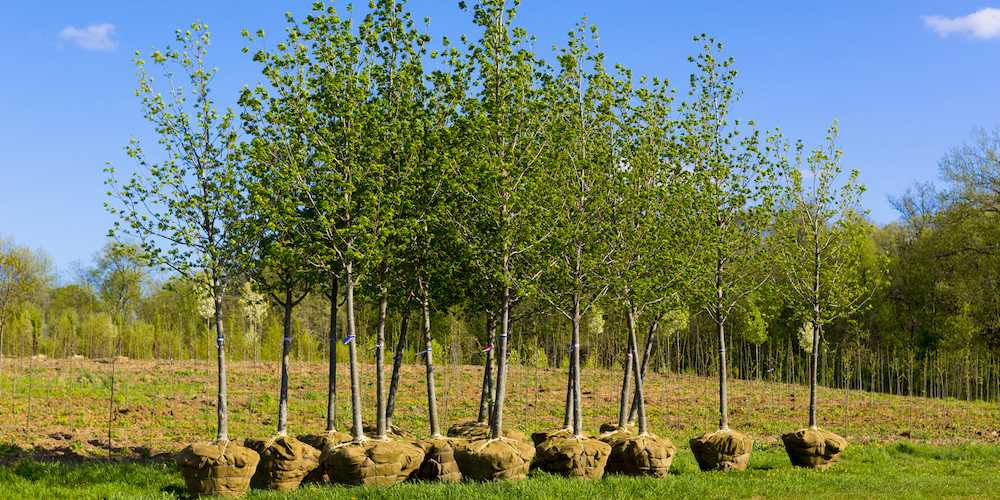
Planting large trees on a country plot creates a natural habitat for various wildlife species, such as birds, squirrels, and insects. These animals play a crucial role in maintaining ecosystem balance and pollinating plants. By providing a home for wildlife, you can contribute to biodiversity conservation and minimize the need for harmful pesticides that can negatively impact the environment.
Overall, planting large trees on a country plot is an effective way to save energy, reduce your carbon footprint, and contribute to a more sustainable environment.
Increasing Property Value
Planting large trees on a country plot can significantly increase the value of the property. Here are some reasons why:
- Curb Appeal: Large trees add beauty and charm to a property. They create a welcoming and aesthetically pleasing environment that can instantly attract potential buyers.
- Privacy and Shade: Trees provide natural barriers and create privacy for the property. They can also provide shade during hot summer months, making the outdoor space more comfortable and enjoyable.
- Energy Efficiency: Mature trees can help lower energy costs by providing shade to the house during the summer and acting as a windbreak during the winter. This can make the property more attractive to buyers who value energy-efficient features.
- Environmental Benefits: Trees are important for the environment as they absorb carbon dioxide, reduce air pollution, and provide habitat for wildlife. Buyers who are environmentally conscious are likely to appreciate a property with large, well-maintained trees.
- Long-Term Investment: Large trees take many years to grow and reach their full potential. By planting mature trees on a country plot, homeowners are making a long-term investment that can increase the value of the property over time.
In conclusion, planting large trees on a country plot not only enhances the beauty of the property but also provides numerous benefits that can increase its overall value. Whether it’s the curb appeal, privacy, energy efficiency, environmental benefits, or long-term investment potential, having mature trees can be a selling point for potential buyers.
Questions and Answers:
What are the benefits of planting large trees on a country plot?
Planting large trees on a country plot has several benefits. Firstly, they provide shade during hot summer months, creating a cooler and more comfortable environment. Secondly, large trees act as natural windbreakers, reducing the impact of strong winds. Additionally, they offer privacy and create a sense of seclusion on the property. Finally, large trees help to improve air quality by absorbing pollutants and producing oxygen.
What types of large trees are suitable for planting on a country plot?
There are several types of large trees that are well-suited for planting on a country plot. Some popular choices include oak trees, maple trees, pine trees, cedar trees, and spruce trees. These trees are known for their ability to grow tall and wide, providing ample shade and creating an aesthetically pleasing landscape. It is important to choose trees that are native to the region and can thrive in the local climate.
How do large trees help to improve air quality?
Large trees play a crucial role in improving air quality. They absorb carbon dioxide, a greenhouse gas that contributes to climate change, and release oxygen as a byproduct of photosynthesis. By doing so, they help to reduce the overall carbon footprint and combat air pollution. Additionally, large trees filter out pollutants, such as dust and particulate matter, from the air, resulting in cleaner and healthier surroundings.
Can large trees be planted close to a house on a country plot?
It is generally recommended to plant large trees at least 20 feet away from a house on a country plot. This distance allows the tree to grow without causing any structural damage to the house. Planting trees too close to the house can lead to problems such as foundation damage, blocked gutters, and roof damage from fallen branches. It is important to carefully consider the location and size of the tree before planting it.
Do large trees require special maintenance?
While large trees do not require as much maintenance as smaller plants, they still need some care. Regular pruning is necessary to remove dead or diseased branches and promote healthy growth. Watering is important, especially for newly planted trees, but should be done sparingly to avoid overwatering. Additionally, adding mulch around the base of the tree helps to retain moisture and suppress weed growth. Overall, regular monitoring and basic maintenance are crucial for the health and longevity of large trees.
Are there any disadvantages of planting large trees on a country plot?
While there are significant advantages to planting large trees on a country plot, there are also some potential disadvantages to consider. Large trees can cast a dense shade that may limit the growth of other plants in the vicinity. They can also have extensive root systems that may interfere with underground utilities or damage nearby structures. Additionally, large trees can be vulnerable to storm damage and require regular maintenance to prevent hazards such as fallen branches. These factors should be taken into account when deciding to plant large trees on a country plot.







